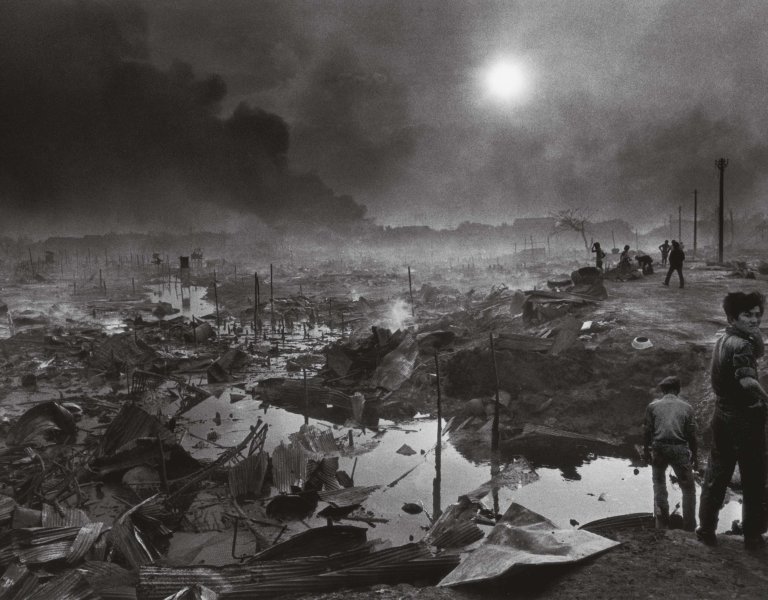
Women war photographers
An exhibition co-organized with the Kunstpalast Düsseldorf
GENERAL CURATOR: Sylvie Zaidman, Historian, Curator, Director of the Musée de la Libération de Paris - Musée du Général Leclerc - Musée Jean Moulin
SPECIALIST CURATORS: Felicity Korn, Advisor to the General Director of the Kunstpalast, Düsseldorf (Germany) Anne-Marie Beckmann, Director of the Deutsche Börse Photography Foundation, Frankfurt (Germany)
Informations
Museum
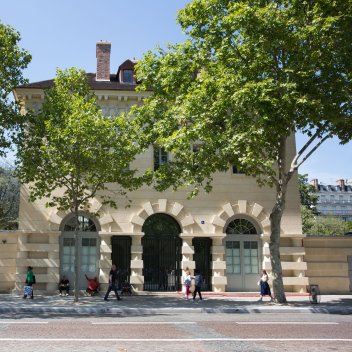
Place Denfert-Rochereau
4 Avenue du Colonel Henri Rol-Tanguy
75014 Paris
France
Infos Pratiques
Musée de la Libération de Paris
Musée du Général Leclerc
Musée Jean Moulin
4 Avenue du Colonel Henri Rol-Tanguy
75014 Paris
(Place Denfert-Rochereau)
Opening time
From Tuesday to Sunday
From 10am to 6pm
From Tuesday 8 March 2022
to Saturday 31 December 2022
Tickets
Full price : 8€
Reduced price : 6€
Public
- Adulte
A new angle ?
While some consider war photography to be a male-dominated profession, many women photographers have worked in war zones. They have documented conflicts all around the world and played a decisive role in shaping the image of war. Unlike their male counterparts in conflict zones, women photographers often have access to families, of which they produce some especially moving portraits. They are also active on the front lines and take photos of war victims that rarely spare the observer. By highlighting the images taken by these eight women war photographers, the exhibition confronts the visitor with a collective view on the violence of war. It explores the notion of gender, specifically the female gaze on war, and undermines established stereotypes in showing that women are just as capable of photographing and witnessing atrocities as men. Women have been on the frontlines for almost a century, taking images without hiding the horror of what they have seen. Some have even died for their profession.
Important issues
This exhibition addresses an issue frequently faced by war correspondents: how should they recount the horrors of war ? Should they make use of a raw uncensored vision or simply allude to what they have witnessed ? These photographers, whose works cover the European conflicts of the 1930s and 1940s to the most recent international wars, draw on a wide stylistic and narrative range. Their approaches alternate between maintaining an objective distance, observation, and personal involvement. Among the photographs, there are intimate glimpses of everyday life during times of war, testimonies of atrocities, and references to the absurdity of war and its dire consequences. Christine Spengler chooses not to depict the charred bodies but the ruins of Phnom Penh, which affect the viewer without revealing the full horror of the scene. The corpses photographed by Gerda Taro and Carolyn Cole more than seventy years apart are equally distressing. The former makes use of a frontal approach, while the latter endows her shots with an aesthetic, calming effect. Catherine Leroy opts for an immediate proximity with her subject and as a result, her images can challenge the viewer.
The image and how it is used
Another issue explored by the exhibition is how certain images are reframed and presented in order to adapt them to the needs of the press.
The photographs on display here are still images, which have been framed and potentially constructed by a certain gaze or a subjective media viewpoint. Viewers are called on to critically analyze these images through the prism of current affairs. In their own distinctive way, each of the photographers presented in this exhibition bears witness to the suffering caused by wars. However, their work is influenced by economic factors, too. As they are employed by press agencies or publications, they are required to provide “publishable” images, complying with the criteria in force at the time the pictures are taken. The iconic image of a Beirut neighborhood shot by Françoise Demulder was almost turned down by her press agency, because the photographer’s intentions were not necessarily those that the media wanted to promote. But this rarely prevents photographers from choosing their subjects and offering highly personal images of the events they cover.
All of the photographers here seek to contribute to publicly revealing what really happens on the battlefield and behind the front.
The exhibition also enables the public to understand how these snapshots are used by the press.
PHOTOGRAPHY : A TOOL FOR UNDERSTANDING HISTORY
The images by these women war photographers confront the viewer with the destiny of individuals, and with history. While the visitor understands the specificity of each of the conflicts covered, a certain overview emerges. We gradually witness the professionalization of conflicts, with a marked increase in the use of cutting-edge technology and weapons by Western armies in response to a threat that is more and more difficult to apprehend. The relationship between the warring factions is never symmetrical in these photographs: the conflicts oppose traditional official armies and poorly equipped combatants. Gerda Taro represents the Spanish People’s Republican Army, sometimes unarmed, while Lee Miller captures the flight of German soldiers at the end of the Second World War. This impression of imbalance is very clearly seen in Catherine Leroy’s brutal images depicting the disparity between the Vietcong fighters and the American Marines. Susan Meiselas photographs rebel guerrillas in Nicaragua. But it is undoubtedly the images by Anja Niedringhaus that best highlight the excessive over-arming of American and Canadian soldiers in the face of an elusive enemy in Iraq (2004), and Afghanistan (2011).
These photographs speak of conflicts near and far, some of which never seem to end. They present the Second World War within the broader context of other 20th and 21st century wars, revealing the deep roots of conflicts that have rocked the world.
The value of these images surpasses their informative quality as they allow us to see how the gaze of these women war photographers has evolved over time, by composing images influenced by their position as women, their perception of operations, and the awareness of the general public. A worthy addition to the history of contemporary conflicts explored by the Musée de la Libération de Paris - Musée du Général Leclerc - Musée Jean Moulin, they provide visitors with new tools to understanding “the sound and the fury” of the world.
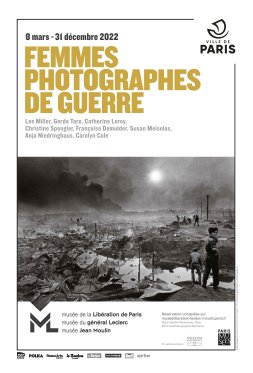
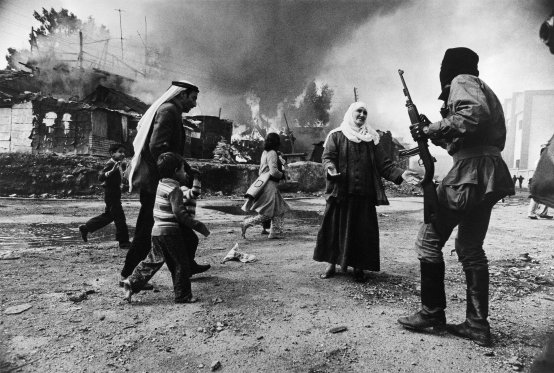
Françoise Demulder, Le massacre du quartier de La Quarantaine. Beyrouth, Liban, 1976
© Succession Françoise Demulder/Roger-Viollet
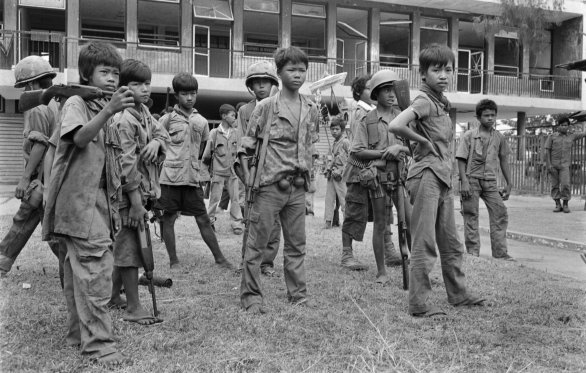
Françoise Demulder, Entraînement d’enfants soldats dans l’armée du gouvernement de Lon Nol. Cambodge, 1974
© Succession Françoise Demulder / Roger-Viollet

Susan Meiselas, Sandinistes devant le quartier général de la Garde nationale à Estelí. Nicaragua, juillet 1979 © Susan Meseilas/Magnum Photos

Carolyn Cole, Une photo de Saddam Hussein, criblée d’impacts de balles, est recouverte de peinture par Salem Yuel. Les symboles des dirigeants politiques ont disparu de Bagdad peu après la prise de la ville par les troupes américaines. Bagdad, Irak, avril 2003
© Carolyn Cole / Los Angeles Times
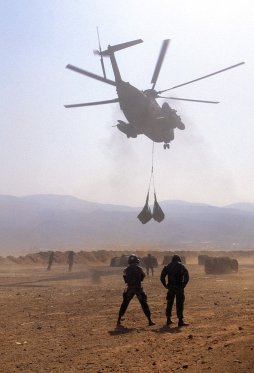
Françoise Demulder, Un hélicoptère « Sea Stallion » des US Marines.
Beyrouth, Liban, 1983
© Françoise Demulder / Roger-Viollet

Françoise Demulder, La prise d’Addis-Abeba : un partisan du Front
démocratique révolutionnaire du peuple éthiopien. Éthiopie,
30 mai 1991© Françoise Demulder / Roger-Viollet

Anja Niedringhaus, Des Marines américains font irruption au domicile d’un député irakien dans le quartier d’Abou Ghraib. Bagdad, Irak, novembre 2004 © Anja Niedringhaus/AP/SIPA

Lee Miller, Chirurgien et anesthésiste réalisant une opération dans le 44e hôpital de campagne près de La Cambe en Normandie. France, 1944
© Lee Miller Archives, England 2022
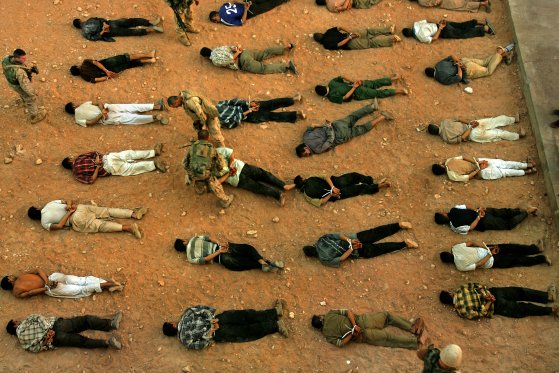
Carolyn Cole, Prisonniers irakiens après l’assaut d’un ancien poste de police à Kufa, en Irak, par des Marines américains. Ce poste servait de base à la milice du Mahdi. Certains prisonniers ont déclaré avoir été pris en otage par ses troupes.
Koufa, Irak, août 2004
© Carolyn Cole / Los Angeles Times